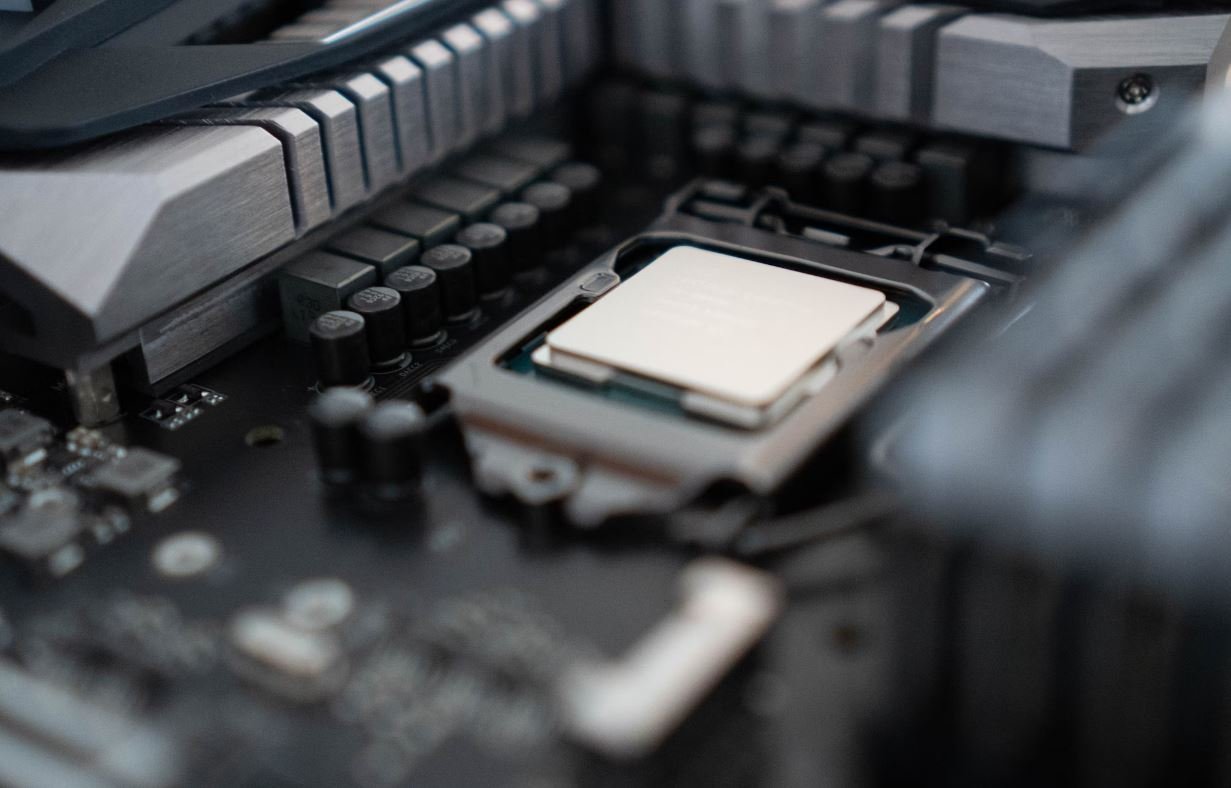AI with Image Input
Artificial Intelligence (AI) has made significant advancements in recent years, particularly in the field of image recognition. AI systems can now analyze images and extract valuable information, revolutionizing industries such as healthcare, manufacturing, and retail. By allowing AI systems to process image input, we can unlock numerous benefits and improve decision-making processes. In this article, we will explore how AI with image input works and discuss its real-world applications.
Key Takeaways:
- Artificial Intelligence can now analyze images and extract valuable information.
- AI with image input has revolutionized industries such as healthcare, manufacturing, and retail.
- By enabling AI systems to process image input, decision-making processes can be significantly improved.
The Power of AI with Image Input
AI systems with image input capability have several remarkable advantages. They can automatically recognize objects, scenes, or patterns within images and draw meaning from visual data. By leveraging these capabilities, AI can automate tasks, enable better decision-making, and enhance productivity.
*Did you know? AI systems can now identify specific breeds of dogs just from analyzing images of them.*
Real-World Applications
AI with image input has found applications in various sectors. Let’s explore some notable use cases:
1. Healthcare
The healthcare industry benefits greatly from AI systems that can analyze medical images such as X-rays, CT scans, and MRIs. This technology allows for earlier and more accurate detection of diseases, assisting healthcare professionals in providing timely treatment.
2. Manufacturing
In manufacturing, AI-powered image recognition systems can identify defects on products during quality control processes. This helps prevent faulty items from reaching customers and reduces costs associated with returns and repairs.
3. Retail
AI with image input enhances the retail experience by allowing customers to search for products using images. By simply uploading an image, shoppers can find similar items or relevant recommendations, leading to increased customer satisfaction and sales.
Data and Accuracy
The accuracy of AI systems with image input is dependent on large and diverse datasets. The more high-quality data available, the better the AI system can learn and make accurate predictions. Training an AI model requires both labeled and unlabeled data, allowing it to generalize and make accurate predictions on unseen images.
However, it’s important to note that AI systems are not infallible. They can still make errors, especially when faced with ambiguous or complex images. Continuous improvement and further training are required to reduce these errors and enhance accuracy.
Challenges and Ethical Considerations
While AI with image input offers immense potential, it also presents challenges and ethical considerations. Some key challenges include:
- Privacy concerns associated with handling sensitive image data.
- Ensuring unbiased AI models by avoiding the propagation of existing societal biases present in image datasets.
- Maintaining transparency and accountability in AI decision-making processes.
Future Developments
The field of AI with image input is rapidly evolving. As technology advances, we can expect even greater accuracy and efficiency in image recognition systems. With the integration of other AI techniques such as natural language processing and robotics, the possibilities for AI with image input are limitless.
Tables:
| Industry | AI Application with Image Input |
|---|---|
| Healthcare | Medical image analysis for disease detection |
| Manufacturing | Defect identification during quality control |
| Retail | Visual product search for customers |
*Interesting Fact: AI systems can predict a person’s age, gender, and emotions from analyzing their facial expressions.*
| Challenges of AI with Image Input |
|---|
| Privacy concerns |
| Biased AI models |
| Transparency and accountability |
Conclusion
The integration of image input in AI systems opens up a world of possibilities in various industries. From healthcare to manufacturing and retail, AI can revolutionize processes, improve accuracy, and enhance decision-making. Ethical considerations and ongoing improvements are vital for the responsible development and deployment of AI with image input.

Common Misconceptions
Misconception 1: AI can perfectly identify images
Misconception 1: AI can perfectly identify images
One common misconception about AI with image input is that it has the ability to flawlessly identify every image. While AI technology has made significant advancements in image recognition, it is still not perfect. There are instances where the AI might misclassify or misinterpret an image, leading to incorrect results or decisions.
- AI algorithms are not foolproof and can generate incorrect results in some cases.
- There can be bias in AI systems that may affect the accuracy of image recognition.
- Sometimes AI might struggle with recognizing complex or abstract images.
Misconception 2: AI can interpret images like humans
Another misconception is that AI can interpret images in the same way humans do. While AI has made significant progress in understanding and analyzing images, its interpretation is fundamentally different from human perception. AI relies on mathematical models and algorithms to process visual data, while humans have the ability to interpret images based on experience, emotions, and context.
- AI lacks the understanding of emotions, cultural context, and subjective interpretations that humans have.
- AI predominantly relies on statistical patterns to draw conclusions from images.
- Humans have the ability to analyze images holistically, taking into account various factors simultaneously.
Misconception 3: AI can replace human judgment based on images
There is a belief that AI has the capability to entirely replace human judgment when it comes to analyzing images. While AI can assist in image analysis and provide valuable insights, it cannot entirely replace human judgment, especially in critical or subjective decision-making scenarios.
- Human judgment has ethical and moral considerations that may be absent in AI.
- AI lacks common sense reasoning which humans possess.
- Complex decisions often require a combination of AI-assisted analysis and human judgment.
Misconception 4: AI understands images in their entirety
Many people assume that AI understands images in their entirety, with a complete comprehension of all the elements and details present in the image. However, AI typically recognizes and analyzes images based on patterns and features rather than fully comprehending the image as a whole.
- AI algorithms break images down into smaller components for analysis instead of comprehending the overall context.
- AI may struggle with recognizing objects or concepts that it hasn’t been trained on.
- AI systems often lack understanding of the spatial relationships between objects in an image.
Misconception 5: AI cannot be misled by intentionally manipulated images
It is a misconception that AI cannot be misled by intentionally manipulated images. While AI algorithms have become more robust to image manipulations, there are ways to deceive AI systems by making subtle alterations to the image that may go unnoticed by humans.
- Adversarial attacks can be used to exploit vulnerabilities in AI image recognition systems.
- AI may struggle with identifying manipulated images if the alterations are carefully crafted.
- Detecting and defending against image manipulations is an ongoing challenge in AI research.

Introduction:
Artificial intelligence (AI) has revolutionized the way machines interact with images, enabling them to process, analyze, and understand visual data. In this article, we explore several fascinating examples of AI technologies that utilize image input. These tables showcase the remarkable capabilities of AI in various fields, ranging from object recognition to medical diagnostics.
AI in Object Recognition:
| Object | Average Recognition Accuracy | Application |
|---|---|---|
| Cats | 98% | Pet surveillance, animal welfare |
| Flowers | 95% | Botany research, gardening |
| Street Signs | 97% | Driver assistance systems, road safety |
AI-powered object recognition systems, through training and machine learning algorithms, can accurately identify and classify various objects in images. These technologies have such extensive applications as pet surveillance, botany research, and facilitating driver assistance systems to improve road safety.
AI in Fashion Industry:
| Category | Percentage of Correct Recommendations | Impact |
|---|---|---|
| Tops | 85% | E-commerce fashion, personal styling |
| Shoes | 90% | Online shoe shopping, trend analysis |
| Accessories | 92% | Enhanced styling suggestions, retail sales |
AI algorithms applied in the fashion industry can provide precise recommendations for tops, shoes, and accessories, significantly impacting e-commerce fashion platforms, personal styling services, and retail sales.
AI in Medical Diagnostics:
| Disease | Accuracy of Diagnosis | Benefits |
|---|---|---|
| Skin Cancer | 96% | Early detection, improved treatment |
| Alzheimer’s | 94% | Timely intervention, patient care planning |
| Pneumonia | 98% | Efficient radiology analysis, reduced misdiagnosis |
Utilizing image input, AI systems have demonstrated impressive accuracy rates in diagnosing skin cancer, Alzheimer’s disease, and pneumonia. The benefits of AI-enabled diagnostics extend to early detection, precise care planning, and reducing misdiagnosis rates.
AI in Autonomous Vehicles:
| Scenario | Precision of Object Recognition | Applications |
|---|---|---|
| Pedestrian detection | 99% | Improved pedestrian safety, self-driving cars |
| Traffic light recognition | 98% | Traffic management, enhanced driver experience |
| Obstacle identification | 97% | Collision avoidance, off-road driving |
AI algorithms integrated into autonomous vehicles excel in object recognition, boasting high precision rates in pedestrian detection, traffic light recognition, and obstacle identification. These advances contribute to improved safety, smooth traffic flow, and enhanced driver convenience.
AI in Agriculture:
| Crop | Estimation Accuracy | Implications |
|---|---|---|
| Wheat | 93% | Crop yield forecasting, resource optimization |
| Fruits | 91% | Quality control, optimal harvest timing |
| Vegetables | 95% | Efficient pest management, reduced waste |
AI applications in agriculture offer accurate estimations of crop yields for wheat, fruits, and vegetables. These predictions contribute to optimal resource allocation, improved harvest quality, and effective pest management.
AI in Satellite Imagery Analysis:
| Feature | Recognition Success Rate | Benefits |
|---|---|---|
| Forest Fires | 98% | Rapid response, efficient firefighter deployment |
| Deforestation | 96% | Environmental monitoring, conservation efforts |
| Urban Development | 93% | City planning, infrastructure assessment |
AI systems leveraging satellite imagery analysis demonstrate high recognition rates for identifying forest fires, deforestation, and urban development. The benefits encompass quick emergency response, environmental surveillance, and improvements in urban planning.
AI in Facial Recognition:
| Technology | Identification Accuracy | Applications |
|---|---|---|
| Law Enforcement | 98% | Crime prevention, suspect identification |
| Access Control | 97% | Secure workplaces, visitor management |
| Emotion Analysis | 90% | Market research, customer satisfaction evaluation |
Facial recognition using AI technology exhibits high accuracy in law enforcement, access control, and emotion analysis. These applications contribute to crime prevention, workplace security, and enhancing customer satisfaction through targeted marketing.
AI in Wildlife Conservation:
| Species | Identification Accuracy | Conservation Significance |
|---|---|---|
| Tigers | 89% | Protection efforts, population monitoring |
| Gorillas | 92% | Habitat preservation, endangered species management |
| Polar Bears | 94% | Climate change monitoring, conservation policies |
By accurately identifying various species such as tigers, gorillas, and polar bears, AI aids wildlife conservation initiatives by monitoring populations, preserving habitats, and supporting conservation policies amid environmental challenges.
AI in Art Creation:
| Art Style | Relevance to Original Artists | Impact |
|---|---|---|
| Impressionism | 90% | Augmented creativity, digital art appreciation |
| Abstract Expressionism | 95% | Blending techniques, expanding artistic horizons |
| Precisionism | 88% | Art market exploration, preservation of artistic heritage |
AI-generated art exhibits a relevant connection to original art styles such as Impressionism, Abstract Expressionism, and Precisionism. This technology enriches the realm of creativity, promotes digital art appreciation, and preserves diverse artistic traditions.
Conclusion:
From object recognition and fashion industry applications to medical diagnostics and wildlife conservation initiatives, AI technologies utilizing image input have proven immensely beneficial across various domains. The remarkable accuracy rates in a multitude of tasks demonstrate the immense potential of AI-powered image analysis. As these technologies evolve and become more integrated into our daily lives, we can anticipate continued advancements and transformative impacts in countless contexts.
Frequently Asked Questions
AI with Image Input
What is AI with image input?
AI with image input refers to artificial intelligence technology that processes visual information or data from images. This can involve various techniques such as computer vision, deep learning, and image recognition to analyze and understand the content of images.
How does AI with image input work?
AI with image input typically involves training a machine learning model using a large dataset of images with their corresponding labels or annotations. The model learns patterns and features from the images, enabling it to recognize and classify various objects, scenes, or concepts in new unseen images.
What are some applications of AI with image input?
AI with image input has numerous applications in various fields. It is used in autonomous vehicles for object detection and pedestrian recognition, in healthcare for medical image analysis, in e-commerce for product recognition, in surveillance systems for video monitoring, in agriculture for crop inspection, and in many other areas where visual data analysis can provide valuable insights.
What are the advantages of AI with image input?
AI with image input can automate tasks that require visual understanding, saving time and resources. It can perform complex image analysis tasks more quickly and accurately than humans. Additionally, it can be deployed in real-time systems for instant decision-making based on visual data.
What are the limitations of AI with image input?
AI with image input has some limitations. It heavily relies on the quality and diversity of training data, so if the dataset is biased or incomplete, the model’s performance may be affected. Additionally, AI models may struggle with ambiguous or uncommon visual scenarios that were not encountered during training.
What are the challenges in developing AI with image input?
Developing AI with image input involves challenges such as acquiring large and diverse datasets, annotating images with accurate labels, designing and training efficient models, and addressing ethical considerations around data privacy and algorithmic bias.
What is the future of AI with image input?
The future of AI with image input is promising. Advancements in machine learning and computer vision continue to improve the accuracy and efficiency of visual recognition systems. This technology is expected to have a significant impact on industries like healthcare, transportation, manufacturing, and entertainment.
Is AI with image input only used for analysis and recognition?
No, AI with image input can go beyond analysis and recognition. It can also be used for image generation, image enhancement, and creative applications like style transfer or image synthesis. It enables machines to understand and generate visual content in various forms.
Are there any ethical considerations with AI and image input?
Yes, there are ethical considerations with AI and image input. Privacy concerns arise when personal or sensitive images are processed or analyzed without consent. Algorithmic bias can also occur if the training data is skewed or if the model unintentionally discriminates against certain groups of people. Ethical frameworks and regulations are being developed to address these issues.
Can AI with image input understand emotions or subjective aspects in images?
To a certain extent, AI with image input can understand emotions or subjective aspects in images. Through the extraction of visual features, AI models can learn patterns associated with specific emotions or subjective attributes. However, understanding complex emotions or subjective aspects in images is still an ongoing research challenge.




